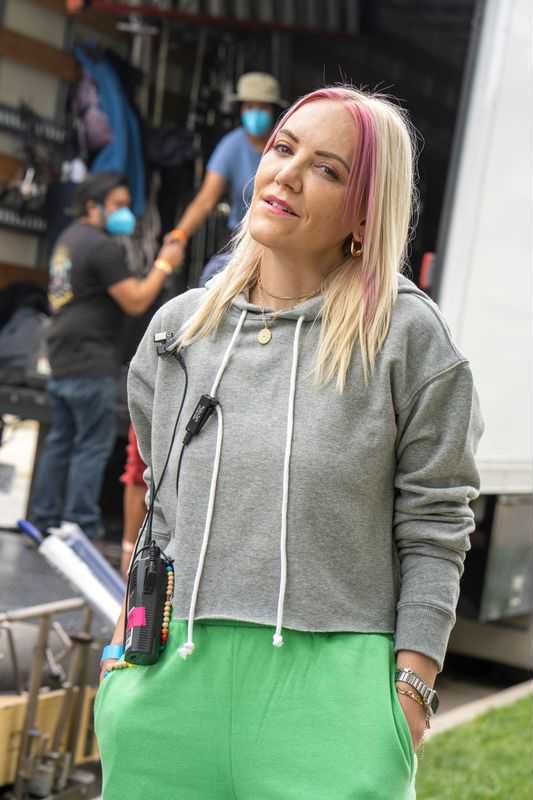Bring Music Home holds nothing back for music fans, providing an ambitious and comprehensive look inside the state of live music venues all over the nation during the pandemic.

By Allie Justis, Photos courtesy of Bring Music Home
In their impressive 500-page book, Amber Mundinger, Tamara Deike and a team of creative collaborators from 30 different cities helped document more than 200 music venues and their owners. Their work brings a distinctly personal aspect into the storytelling of such dearly loved institutions and their struggles to stay afloat.
A large amount of the success achieved with Bring Music Home is due in no small part to the team of highly qualified creatives that built this project from the ground up. Mundinger, the CEO of Bring Music Home, has had a passion for live music all her life. But funnily enough, she actually started out her career in sports, fashion and entertainment before transitioning over to the music industry. Since her move to music, she has been a part of large-scale projects like the relaunch of Rolling Stone, and is now also the COO for Artists Den Entertainment.
Another vital part of the team is Chief Marketing Officer Tamara Deike. Deike has been working in the industry for 20 years doing everything from working directly with artists as a talent agent to becoming a DJ abroad, touring all over Europe. Within the past couple of years, though, she made the move to Austin, pursuing the vibrant live music scene of the city. She also created her own agency called Aces High.
Saving Legacies
For both of these talented women, the Bring Music Home project began as a response to the pandemic. They saw the financial devastation that tore through the live music community, causing thousands upon thousands of venues to die off within a matter of months. Their team’s goal was to tell the stories of this dying industry in an effort to raise awareness about the state of the community and eventually help raise money and get government aid in order to save these legacy venues across the world.
“When we started this project, it was really with the purpose of showing the humanity behind the industry and really highlighting owners, operators and the people that are behind the scenes,” says Mundinger. “The book is kind of the foundation of the stories that we want to continue to tell. We want to really go deeper into all of those stories. Explore what effect this pandemic has had on communities and how things look as we move forward culturally.”
The Bring Music Home team started by doing plenty of research, pulling on old connections and reaching out to make new ones with creatives in every city they visited. Amassing an army of dedicated artists, designers and collaborators, the project now has more than 100 people that have helped make it a reality.
Bring Music Home Comes Home to Austin
When Bring Music Home came to Austin, three specific venues stood out from the crowd for Deike and Mundinger. Austin mainstays like Stubbs told heartbreaking stories of how they had to let go of more than 100 staff members who were like family. How their venue deeply struggled when having to stop and start business over and over again. However, these hardships didn’t break the spirit of Stubbs or their commitment to their community.

Tamara Deike 
Amber Mundinger
Another story that hit home for Deike and Mundinger were stories of straight-up resilience like Antone’s, the venue that brought the blues to Austin. Susan Antone, the current owner of the venue, told Bring Music Home how hard it has been for them and how she feels responsible for carrying the torch that her brother gave her. Antone’s has moved locations. Reinvented themselves so many times. But they are still standing strong.
The final story they touched on was Threadgills, whose owner talked about all the music history that’s come through Austin from Janis Joplin to Willie Nelson since opening up in 1933. However, the unfortunate truth was that not even all of the history in the world could save this historic Austin venue. Midway into the pandemic, Threadgills made the decision to permanently shut down. They held an auction of all the memorabilia amassed over 87 years in business.
The Love of the Fans
This is not an unfamiliar situation amongst live music venues in Austin this year. With main remaining venues still hanging on by a thread, it really came down to the fans to save them. Many venues have seen a massive outpouring of support from the Austin community. For Deike, who has been living in Austin for a few years now, it was heartwarming to see in action.
“You look at Austin, and this is the city of music,” she says. “You have all these venues here. And these venues have very loyal fan bases that were willing to do whatever it took to support the staff they knew.”
Bring Music Home was always going to be more than a book for Mundinger and Deike. In many ways, it is one giant love letter to the live music industry, detailing how much it means to people to be even just a small part of it.
“I saw it in their eyes, every single time,” says Mundinger. “I saw how much it meant to talk about their story, their venue, their city. What it means to them to be a part of what is collectively a music family.”
The Future of Bring Music Home
To help provide relief for these struggling business owners, Bring Music Home launched a comprehensive poster project to pair with their book. Collaborating with artists in each city they visited, Bring Music Home helped to make meaningful posters that embodied the spirit of each city. For Austin, artist Justin Prince was inspired by Jim Franklin, the Austin artist who created the iconic armadillo world headquarters artwork. All the proceeds from the profits made from these posters have been going to the National Independent Association (NIVA) as an emergency relief fund.
Saving these music venues and bringing awareness to their struggles has always been at the heart of the Bring Music Home project. More than that, this project’s goal is to save the communities that fill these spaces so they can live on for years to come.
“The communities around these places are so special,” says Mundinger. “Music is the great unifier. It’s kind of amazing to see that ripple effect of music continuing to still unify people in order to save these cultural institutions and their communities. Because at the end of the day, these spaces mean something to so many people, and they deserve to continue on.”


